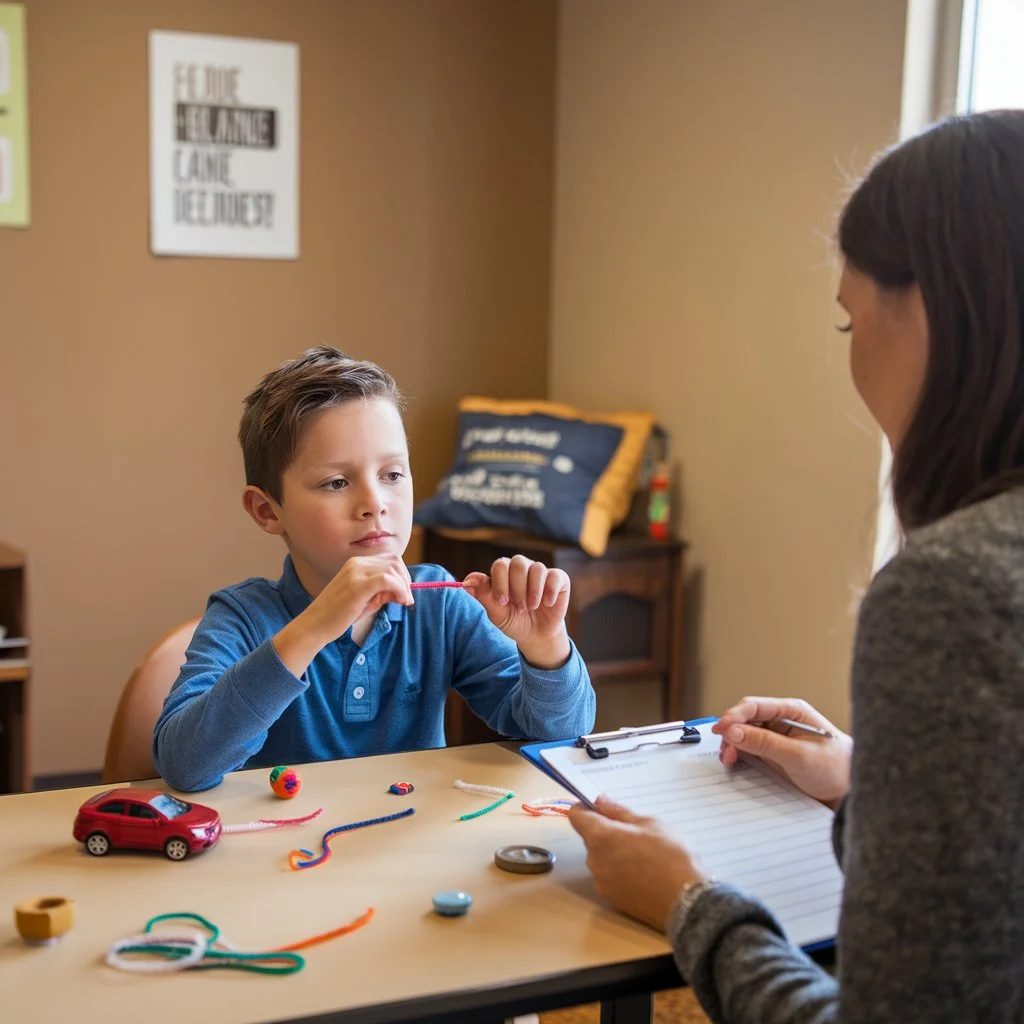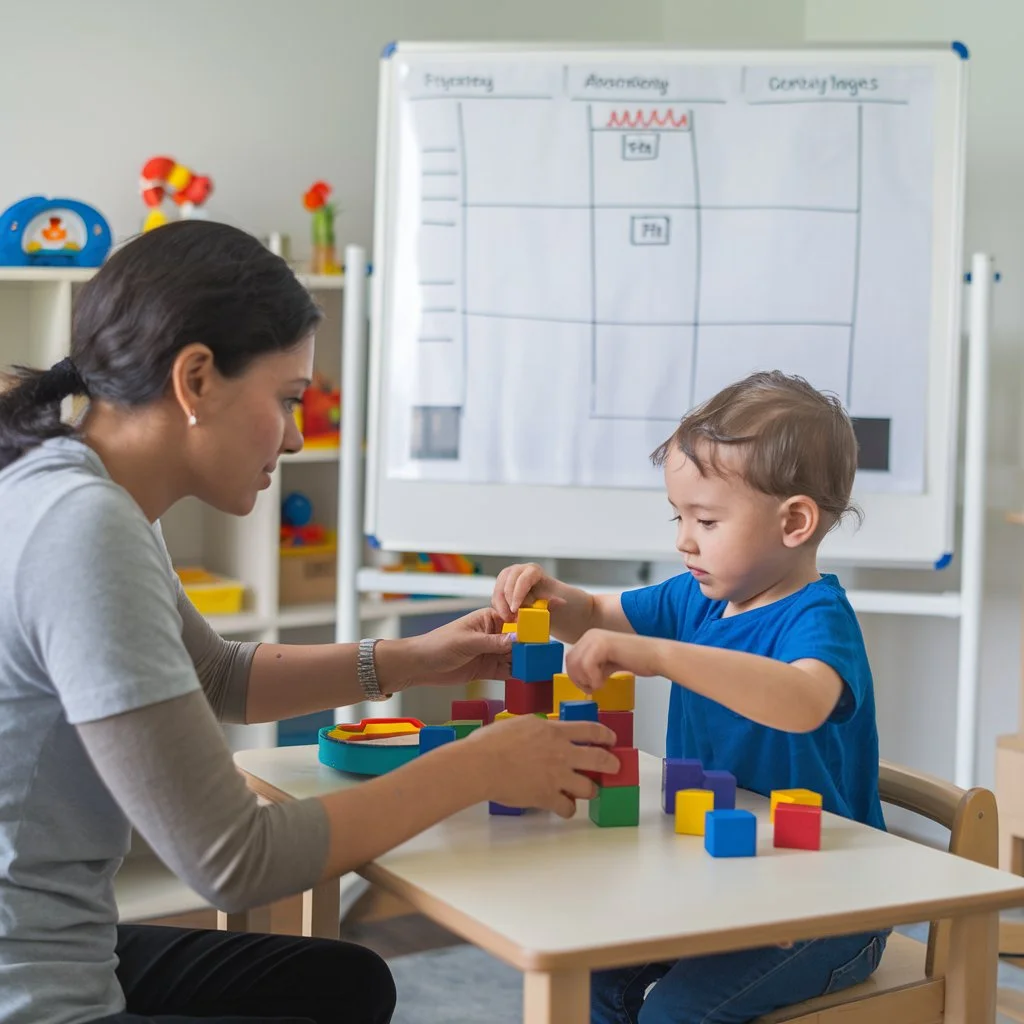A Complete Guide on Setting ABA Therapy Goals
Setting goals in ABA therapy is essential for maximizing the effect of therapy periods and ensuring measurable success.
This manual delves deep into the nuances of implemented behavior evaluation (ABA) specializing in the way to efficiently set and obtain individualized goals.
Whether you’re a caregiver, therapist or someone searching for knowledge on this subject this comprehensive article will equip you with precious insights.
Discover a complete guide on setting ABA Therapy goals to maximize progress, improve behavior and achieve lasting success in personalized treatment.
Understanding ABA Therapy

What is ABA Therapy?
Applied behavior analysis is a scientific method that makes use of behavioral concepts to result in meaningful and advantageous conduct exchange. Grounded inside the observer of behavioral patterns ABA therapy is broadly diagnosed for its effectiveness in treating people with Autism Spectrum Disorder (ASD) and other developmental disorders.
The foundational idea of ABA is to use behavior modification strategies to inspire advantageous behaviors and decrease challenging behaviors. That is accomplished through a spread of interventions that are tailor made to the desires of the person.
Importance of Setting Goals in ABA Therapy
Placing clean and doable goals in ABA therapy is crucial for several motives:
- Focus:Goals provide a clear direction for both therapists and clients.
- Motivation:Specific targets can motivate people to attempt development.
- Measurement: Goals allow for effective progress monitoring making it less complicated to track improvements and setbacks.
By way of focusing on individualized dreams therapy can come to be greater relevant and impactful leading to greater therapy effectiveness.
Setting Effective Goals

Characteristics of Good ABA Therapy Goals
When putting dreams in ABA therapy it’s critical to make certain they own certain traits:
- Specificity: Goals should be clear and concise. For example, instead of saying “improve communication skills,” specify “increase the use of functional communication by 30% within three months.”
- Achievability: Goals ought to be sensible. Putting overly bold dreams can cause frustration. Instead for incremental development.
- Relevance: Make certain that desires align with the individual’s needs and daily living abilities. For example a purpose focusing on social abilities can be critical for a person looking to improve peer interactions.
- Time bound:Every purpose ought to have a hard and fast time frame for achievement. This creates a sense of urgency and duty.
Individualized Goal Setting Process
The process of setting individualized goals involves several steps:
- Assessment: Behavior an intensive behavioral assessment to pick out strengths and demanding situations. Use assessment tools to collect information on modern behaviors.
- Collaboration: Engage the consumer and their caregivers inside the purpose putting method. This ensures that the goals are significant and relevant.
- Framework Creation: BBroaden a customized framework based totally on the assessment findings. This includes outlining specific goals and the strategies to achieve them.
By way of following those steps therapists can create a strong foundation for powerful aim setting.
Types of ABA Therapy Goals
Behavioral Goals
Behavioral dreams focus on enhancing unique behaviors. Those may additionally consist of lowering self stimulatory behaviors, growing compliance or reducing aggression.
Examples of Behavioral Goals:
- Reduce disruptive behaviors within the lecture room by way of 50% within six months.
- Boom participation in group sports by attending at the least three classes per week.
Communication Goals
Improving conversation talents is a crucial element of ABA therapy. An effective communique can significantly decorate social interactions and reduce frustration.
Examples of Communication Goals:
- Train using three alternative verbal exchange methods (e.g., photograph exchange, sign language) within 4 months.
- Growth the usage of verbal praise in daily interactions through 20% over 8 weeks.
Social Skills Goals
Social skills desires purpose to facilitate higher interactions with peers and circle of relatives contributors. enhancing these talents can result in stepped forward relationships and extra independence.
Examples of Social Skills Goals:
- Initiate conversations with friends a minimum two times at some stage in every therapy session.
- Participate in role gambling sports to practice various social scenarios along with greeting a person or sharing.
Monitoring Progress

Data Collection and Analysis
Powerful data collection is essential in monitoring the progress of ABA therapy goals. By systematically gathering information therapists can analyze behavioral outcomes and determine if the individual is heading in the right direction to satisfy their desires.
Methods of Data Collection:
- Direct observation: Recording behaviors as they occur in real time.
- Checklists: Using predefined criteria to assess whether specific behaviors are exhibited.
- Surveys: Gathering feedback from caregivers and teachers regarding behavioral changes.
Adjusting Goals as Needed
As people develop it’s vital to remain bendy and regulate desires when important. This guarantees that therapy continues to meet the evolving wishes of the man or woman.
When to Adjust Goals:
- If development reaches a plateau take into account editing the dreams to cause them to be extra challenging.
- If an intention proves too ambitious, scale it again to keep motivation and fulfillment.
- Often evaluation desires during therapy periods to make sure alignment with the person’s present day capabilities.
Celebrating Achievements
Recognizing Milestones
Celebrating achievements, regardless of how small, is essential in ABA therapy. Spotting milestones can boost motivation and fortify fine behavior exchange.
Ways to Recognize Milestones:
- Verbal praise: Offering encouragement and recognition during sessions.
- Tangible rewards: Providing small rewards for reaching specific goals such as earning tokens for successful behaviors.
- Celebration events: Organizing informal gatherings to celebrate significant achievements with family and friends.
Reinforcing Positive Progress
Reinforcement strategies play a pivotal role in keeping motivation. With the aid of continuously reinforcing wonderful conduct therapists can encourage the continuation of preferred behaviors.
Types of Reinforcement:
- Positive reinforcement: Offering rewards or praise when desired behaviors occur.
- Negative reinforcement: Removing an unpleasant stimulus when a desired behavior is exhibited.
Collaborating with Therapists and Caregivers

Importance of Teamwork
Collaboration with some of the therapy team, caregivers and the individual receiving therapy is crucial for fulfillment. A unified technique ensures that everyone is on the equal page and operating in the direction of common dreams.
Communication Strategies for Success
Effective conversation techniques amongst group contributors can decorate collaboration. Here are a few strategies:
- Regular meetings: Schedule regular test ins to speak about development and adjust goals..
- Shared documentation: Use shared platforms to track data and share updates.
- Feedback loops: Encourage open dialogue about what works and what doesn’t allow for continual improvement.
FAQ’s
What is the role of parents in goal setting for ABA therapy?
Dad and mom play an essential function inside the goal setting procedure. Their insights about the kid’s strengths, challenges and everyday environment help create applicable and meaningful goals. Taking part with therapists guarantees that dreams align with the child’s wishes each at domestic and in therapy.
Can goals be too specific?
While specificity is important, overly precise desires can restrict flexibility. It’s crucial to strive for stability making sure that desires are targeted and also allow for changes based totally at the person’s progress and changing desires.
How do therapists stay updated on best practices for goal setting in ABA therapy?
Therapists regularly engage in non stop professional development via workshops, conferences and studying current research in the discipline of ABA therapy .Staying linked with expert groups also affords treasured assets and updates on excellent practices.
Can ABA therapy goals be applied outside of therapy sessions?
Certainly! goals ought to expand into daily existence encouraging the man or woman to practice discovered abilities in various settings inclusive of home and school. This generalization enables reinforce gaining knowledge of and promotes extra large behavioral changes.
Conclusion
Setting effective desires in ABA therapy is critical to fostering high quality conduct exchange and improving average remedy effectiveness.
Knowing the standards of behavioral analysis and specializing in individualized goals, therapists can create supportive and nurturing surroundings for their customers.
With a dependent method to intention placing, ordinary tracking and sturdy collaboration among caregivers and therapists individuals can acquire large milestones.
Consider the journey of progress is simply as important as the destination so have a good time each victory along the way.
Additional Resources
For further reading on ABA therapy and goal-setting, consider exploring the following resources:
Association for Behavior Analysis International
Autism Society
National Autism Center
By leveraging these insights and strategies you can effectively set and achieve goals in ABA therapy paving the way for a brighter future.







